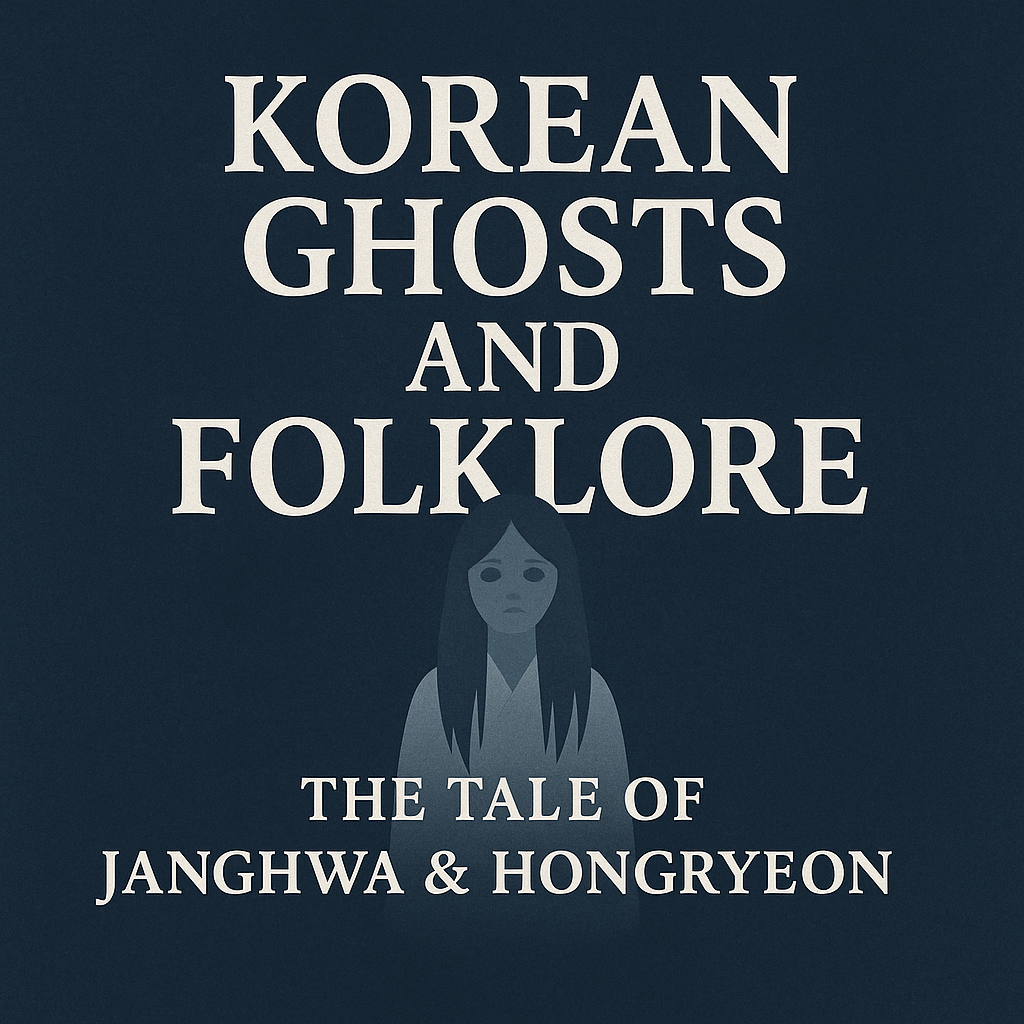“A haunting tale of betrayal, injustice, and two sisters who returned from beyond.”

If you’re fascinated by ghost stories and supernatural folklore from around the world, you’ll love the chilling and tragic Korean legend of Janghwa and Hongryeon (장화홍련전) — two sisters who died under mysterious circumstances and returned as vengeful spirits to seek justice.
This timeless tale is one of Korea’s most famous traditional ghost stories, and it continues to be adapted in movies, books, and dramas even today.
What Is the Tale of Janghwa & Hongryeon?
The tale begins with two kind-hearted sisters, Janghwa (Rose Flower) and Hongryeon (Red Lotus), who lived a simple life with their loving, widowed father. Their peaceful existence, however, was shattered when their father remarried. Their new stepmother, a woman consumed by envy and a wicked heart, quickly began to show her true colors. She harbored a deep resentment towards the beautiful and gentle sisters, particularly after she bore her own children, whom she favored above Janghwa and Hongryeon.
The Stepmother’s Cruelty and Janghwa’s Tragic End
The stepmother’s cruelty escalated over time, culminating in a sinister plot against the innocent sisters. She concocted a scheme to frame Janghwa, accusing her of shameful acts that would bring dishonor upon the family. In one particularly chilling detail, she placed a skinned rat near Janghwa’s sleeping place, claiming it was a miscarriage, and then manipulated the father into believing his daughter had disgraced them.
Under the weight of these false accusations and his wife’s relentless pressure, the father, tragically swayed by his new wife’s deceit, sent Janghwa away with her stepmother’s brother, ostensibly to find a husband. Instead, the stepmother’s brother, following her wicked instructions, led Janghwa to a serene pond. There, he brutally pushed her into the water, and the innocent Janghwa tragically drowned.
Hongryeon’s Despair and Mysterious Death
Upon learning of her beloved sister’s horrific fate, Hongryeon was utterly devastated. Consumed by grief and despair, she struggled to cope with the immense loss and the injustice of it all. Not long after Janghwa’s death, Hongryeon, unable to bear the sorrow and the continued torment from her stepmother, also died under mysterious circumstances. Some versions of the tale suggest she took her own life out of unbearable sorrow, while others imply the stepmother’s continued persecution led to her demise.
The Ghosts’ Plea for Justice: Haunting the Magistrates
With their lives unjustly cut short, the innocent souls of Janghwa and Hongryeon returned as vengeful spirits, unable to rest until justice was served. They began to haunt the village, appearing to the local magistrates to plead their case.
However, the sight of the ghostly sisters was so terrifying that several magistrates fled in fear, unable to bear the spectral encounter. The ghosts would appear in their chambers, recounting their tragic story, but the sheer terror would cause the officials to faint or abandon their posts. This repeated failure to address the haunting created a chilling reputation for the village, and no one dared to take on the magistrate position there.
Finally, a wise and courageous new magistrate was appointed. Unlike his predecessors, he was not easily swayed by fear. When the ghosts of Janghwa and Hongryeon appeared before him, he remained composed, listening patiently as they recounted the horrifying details of their deaths, even reproducing the scene of Janghwa’s drowning. Their vivid and consistent testimony, along with the physical evidence of the rat and the false accusations, convinced the magistrate of the stepmother’s heinous crimes.
Justice Served and Honor Restored
Armed with the truth, the magistrate launched a thorough investigation. The wicked stepmother and her brother were apprehended, interrogated, and eventually confessed to their monstrous deeds. The stepmother was subjected to a just and severe punishment (often depicted as beheading), and her brother also faced consequences for his role in the crime.
With the truth revealed and justice finally served, the family’s honor was restored. The spirits of Janghwa and Hongryeon, now at peace, were able to ascend, leaving the village free from their haunting presence. The tale concludes with the father finding solace in his newfound understanding and, in some versions, even a miraculous rebirth of the two sisters.
Why Is This Korean Ghost Story So Popular?
Koreans are deeply influenced by Confucian values like filial piety, justice, and karma. This tale resonates because:
- It portrays injustice and the supernatural as intertwined
- It shows ghosts not just as scary beings, but moral agents
- It explores themes of abuse, revenge, and redemption
It also touches on the universal theme of family betrayal, which gives it timeless emotional depth.
Modern Adaptations: From Folklore to Film
The tale inspired several Korean horror movies, the most famous being:
- “A Tale of Two Sisters” (2003): A psychological horror masterpiece based loosely on the legend.
- Various TV dramas and novels have reimagined the story with modern twists.
These adaptations help global audiences connect with Korean horror folklore while exploring psychological and emotional trauma.
Cultural Significance in Korean Folklore
Janghwa and Hongryeon are classic examples of wonhon (원혼) — restless spirits who died with deep resentment or sorrow. Korean folklore is filled with such stories where ghosts demand justice, often through eerie hauntings.
This tale teaches:
- The consequences of cruelty
- The power of truth eventually being revealed
- That even in death, the innocent will not be silenced
Final Thoughts
The story of Janghwa and Hongryeon is more than just a ghost tale — it’s a reflection of Korean values, family dynamics, and spiritual beliefs. For lovers of dark folklore, this is a must-read legend that stands shoulder-to-shoulder with Western tales like The Woman in White or The Ring.
Whether you’re new to Korean ghost stories or a seasoned horror enthusiast, this tale is a haunting reminder that the past never truly dies — and sometimes, it comes back with a message.
